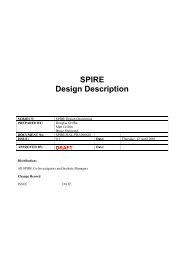gambling in alberta - Research Services - University of Lethbridge
gambling in alberta - Research Services - University of Lethbridge
gambling in alberta - Research Services - University of Lethbridge
Create successful ePaper yourself
Turn your PDF publications into a flip-book with our unique Google optimized e-Paper software.
percentage <strong>of</strong> the population (i.e., remember<strong>in</strong>g that about 25% <strong>of</strong> people do not gamble at all,<br />
and for those that do gamble, most only buy the occasional lottery and raffle ticket). The<br />
possible exceptions to this are reserve communities host<strong>in</strong>g an economically successful cas<strong>in</strong>o,<br />
where widespread economic and social benefits typically occur (Williams, Rehm, & Stevens,<br />
2011).<br />
Thus, a more pert<strong>in</strong>ent (and answerable) question concerns the impact <strong>of</strong> <strong>gambl<strong>in</strong>g</strong><br />
<strong>in</strong>volvement at an <strong>in</strong>dividual level. One way <strong>of</strong> address<strong>in</strong>g this question is through an<br />
exam<strong>in</strong>ation <strong>of</strong> subjective well be<strong>in</strong>g; more specifically, self-reported levels <strong>of</strong> happ<strong>in</strong>ess and<br />
stress as a function <strong>of</strong> whether a person engages <strong>in</strong> <strong>gambl<strong>in</strong>g</strong> or not. Gambl<strong>in</strong>g participation as<br />
a function <strong>of</strong> self-reported stress and happ<strong>in</strong>ess was asked <strong>in</strong> the 2008 population survey (not<br />
<strong>in</strong> the 2009 survey) and the results are reported <strong>in</strong> Table 36. For comparison purposes the<br />
lower levels <strong>of</strong> happ<strong>in</strong>ess and higher levels <strong>of</strong> stress observed among problem gamblers<br />
(measured by the PPGM) are also presented. A Chi Square test found that happ<strong>in</strong>ess rat<strong>in</strong>gs<br />
were significantly different between gamblers and nongamblers (Chi square (4 df) = 27.8, p =<br />
.000014). A z test <strong>of</strong> column proportions determ<strong>in</strong>ed that the specific differences were higher<br />
levels <strong>of</strong> ‘very high’ happ<strong>in</strong>ess among the nongamblers, and correspond<strong>in</strong>gly lower levels <strong>of</strong><br />
‘high’ happ<strong>in</strong>ess relative to gamblers. Here aga<strong>in</strong>, it is impossible to know whether<br />
non<strong>gambl<strong>in</strong>g</strong> is more conducive to happ<strong>in</strong>ess or whether happier people are just less likely to<br />
gamble. 67 In either case, these results <strong>in</strong>dicate that non<strong>gambl<strong>in</strong>g</strong> bears a somewhat stronger<br />
association with self-reported happ<strong>in</strong>ess.<br />
In contrast to levels <strong>of</strong> happ<strong>in</strong>ess, no significant difference was found for levels <strong>of</strong> stress<br />
between gamblers and nongamblers (Chi Square (4 df) = 4.43, p = .351).<br />
Table 36: Self-Rated Stress and Happ<strong>in</strong>ess as a Function <strong>of</strong> Past Year Gambl<strong>in</strong>g Status (2008).<br />
In the past 12 months<br />
how would you rate<br />
your overall level <strong>of</strong><br />
happ<strong>in</strong>ess?<br />
In the past 12 months<br />
how would you rate<br />
your overall level <strong>of</strong><br />
stress?<br />
Non-Gambler Gambler<br />
Problem<br />
Gambler<br />
# % # % # %<br />
Very Low 8 1.0% 23 1.1% 3 4.5%<br />
Low 21 2.6% 68 3.1% 7 10.6%<br />
Moderate 298 35.7% 795 36.9% 34 51.5%<br />
High 321 38.5% 961 44.6% 15 22.7%<br />
Very High 184 22.1% 310 14.4% 7 10.6%<br />
Very Low 129 15.6% 305 14.2% 2 3.0%<br />
Low 162 19.5% 480 22.3% 8 12.1%<br />
Moderate 370 44.7% 902 42.0% 35 53.0%<br />
High 114 13.8% 312 14.5% 12 18.2%<br />
Very High 53 6.4% 149 6.9% 9 13.6%<br />
67 A multiple regression on this same data set shows that although non<strong>gambl<strong>in</strong>g</strong> is still a statistical predictor <strong>of</strong><br />
level <strong>of</strong> happ<strong>in</strong>ess, that it is less predictive than several other th<strong>in</strong>gs (i.e., absence <strong>of</strong> addictive behaviour, age,<br />
nonuse <strong>of</strong> tobacco, gender).<br />
151
















